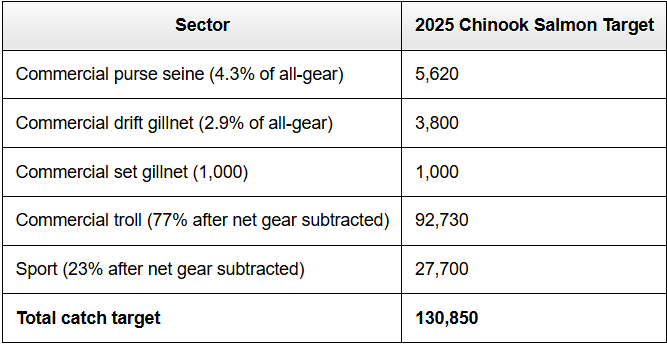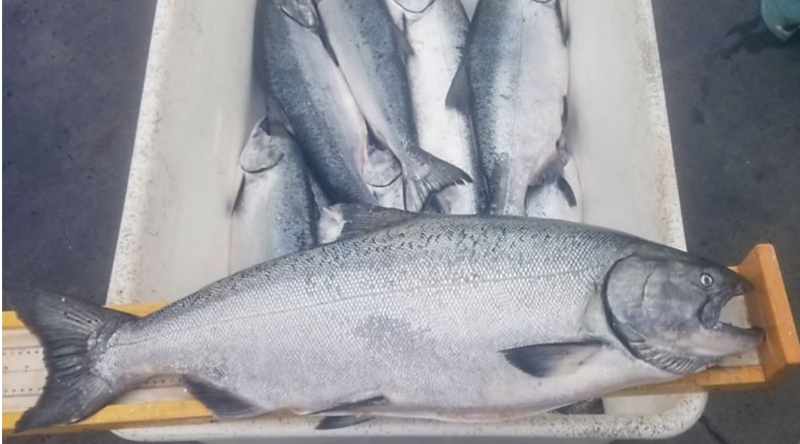The Alaska Department of Fish and Game (ADF&G) announced a preseason all-gear catch limit of 133,500 treaty Chinook salmon for Southeast Alaska in 2025, per the Pacific Salmon Treaty provisions.
ADF&G has set a target of 130,850 Chinook salmon, incorporating a 2 percent reduction from the treaty catch limit to serve as a buffer against exceeding the all-gear limit and triggering payback provisions.
This catch limit is determined by using the abundance index from the Pacific Salmon Commission Chinook model, a requirement under Chapter 3 of the treaty. ADF&G scientists have reviewed the model’s inputs and outputs and are exploring alternative models for future catch limit determinations. The distribution of the 2025 South East Alaska Chinook salmon all-gear catch limit among various sectors is as follows, according to ADF&G:

The preseason outlook indicates improvements for the four Southeast Alaska Chinook salmon stocks—the Situk, Chilkat, Taku, and Unuk rivers—which are forecasted to exceed their escapement goals. However, the Stikine River has a below-goal forecast and has missed its escapement goal for nine consecutive years. Due to poor recent production in the region, including stocks such as the King Salmon River, Andrew Creek, and Chickamin River, and several Southeast Alaska stockers being recently designated as stocks of management concern, ADF&G will continue conservation management to minimize catches of Southeast Chinook salmon in 2025.
In addition to these measures, ADF&G is implementing “unprecedented” conservation actions to address the decline of Gulf of Alaska Chinook salmon, which is currently under review for listing under the federal Endangered Species Act. Restrictions will affect western Alaska king salmon fisheries, including those in Kodiak, Chignik, and Sand Point. For instance, starting July 1, purse seiners in the Area M region must release Chinook measuring 28 inches or longer and adhere to a new catch limit of 1,000 salmon during any 36-hour opener in a harvest area east of Popof Island, where Sand Point is located. These measures aim to distribute conservation burdens more evenly across regions encountering Gulf of Alaska Chinook.
As the state’s commercial fishermen prepare for the upcoming season, these evolving management strategies underscore the delicate balance between conservation efforts and industry needs.







